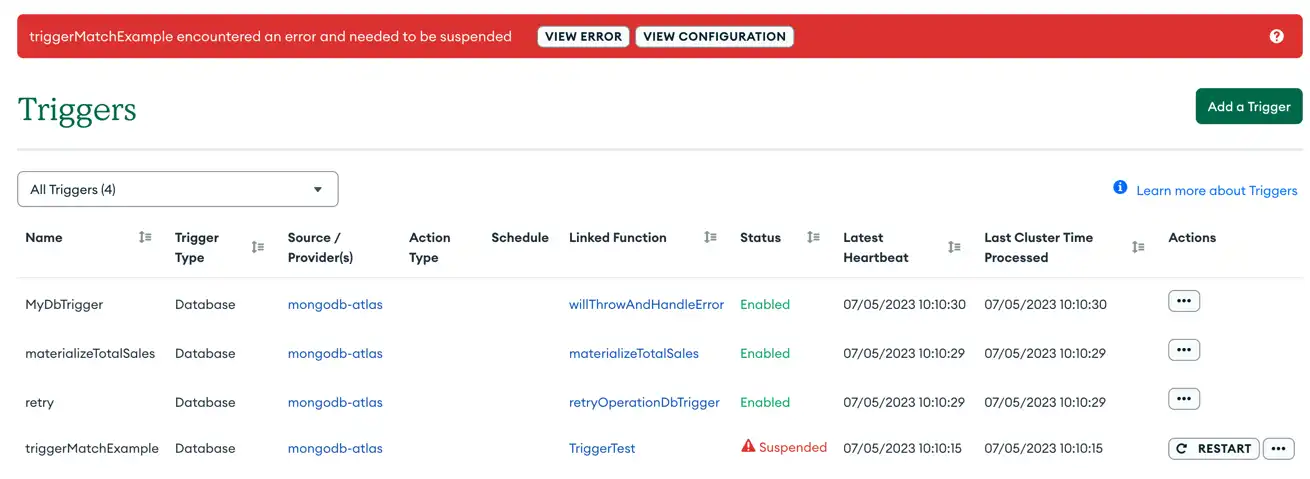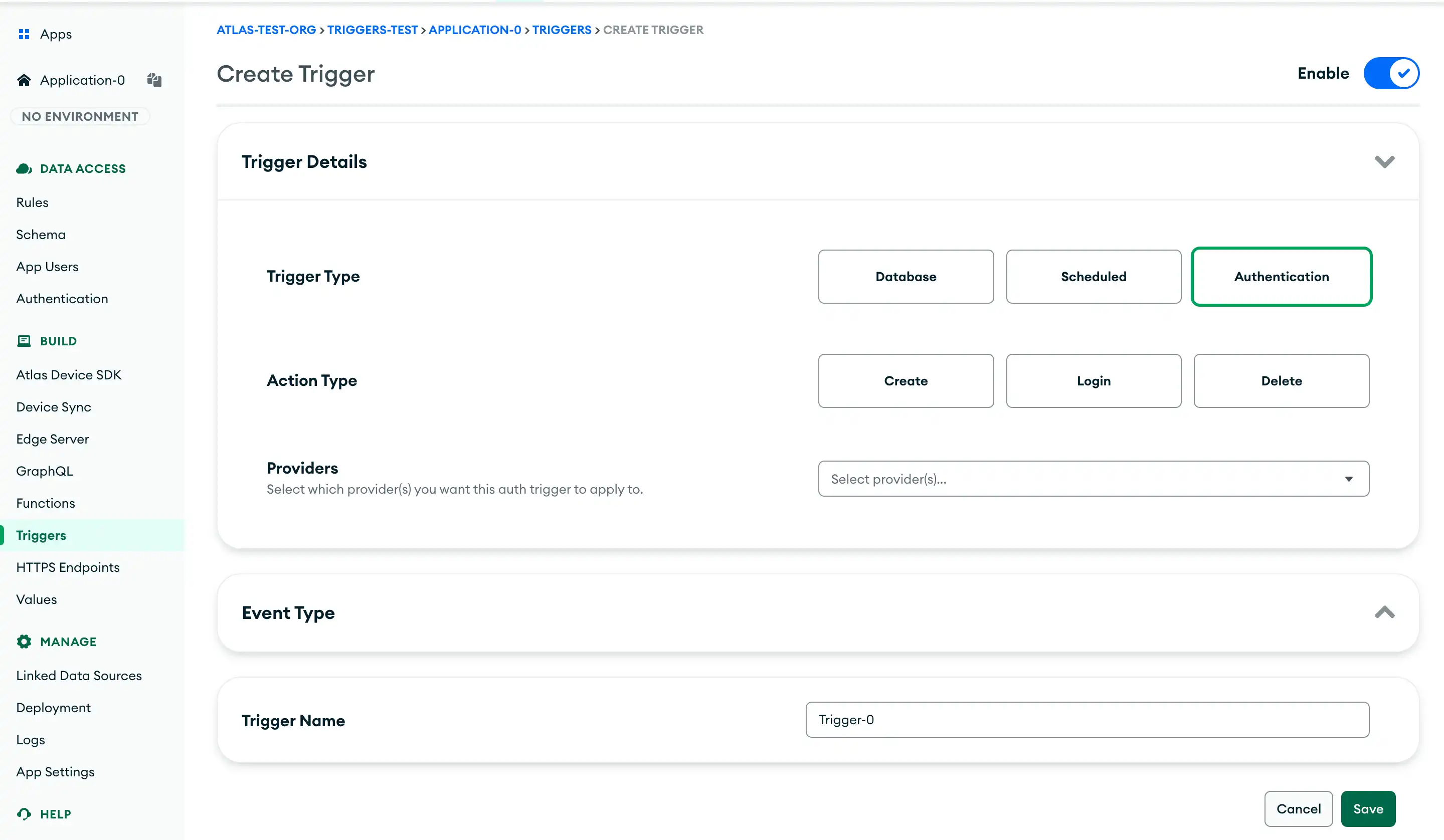Disable a Trigger
On this page
Overview
Triggers may enter a suspended state in response to an event that prevents the Trigger's change stream from continuing, such as a network disruption or change to the underlying cluster. When a Trigger enters a suspended state, it does not receive change events and will not fire.
Note
In the event of a suspended or failed trigger, Atlas App Services sends the project owner an email alerting them of the issue.
You can suspend a Trigger from the Atlas App Services UI or by importing an application directory with the App Services CLI.
Verify that the Trigger Configuration File Exists
If you exported a new copy of your application, it should already include an
up-to-date configuration file for the suspended trigger. You can confirm that
the configuration file exists by looking in the /triggers directory for a
trigger configuration file with the same name
as the trigger.
Disable the Trigger
After you have verified that the trigger configuration file exists, add
a field named "disabled" with the value true to the top level
of the trigger json definition:
{ "id": "6142146e2f052a39d38e1605", "name": "steve", "type": "SCHEDULED", "config": { "schedule": "*/1 * * * *" }, "function_name": "myFunc", "disabled": true }
Restoring from a Snapshot
Consider the following scenario:
A database trigger is disabled or suspended.
New documents are added while the trigger is disabled.
The database is restored from a snapshot to a time prior to the new documents being added.
The database trigger is restarted.
In this case, the trigger picks up all of the newly-added documents and fires for each document. It will not fire again for events that have already been processed.
Note
If a previously-enabled database trigger is running during snapshot restoration, you will see an error in the Edit Trigger section of the Atlas UI because the trigger cannot connect to the Atlas cluster during the restore process. Once snapshot restoration completes, the error disappears and the trigger continues to execute normally.

